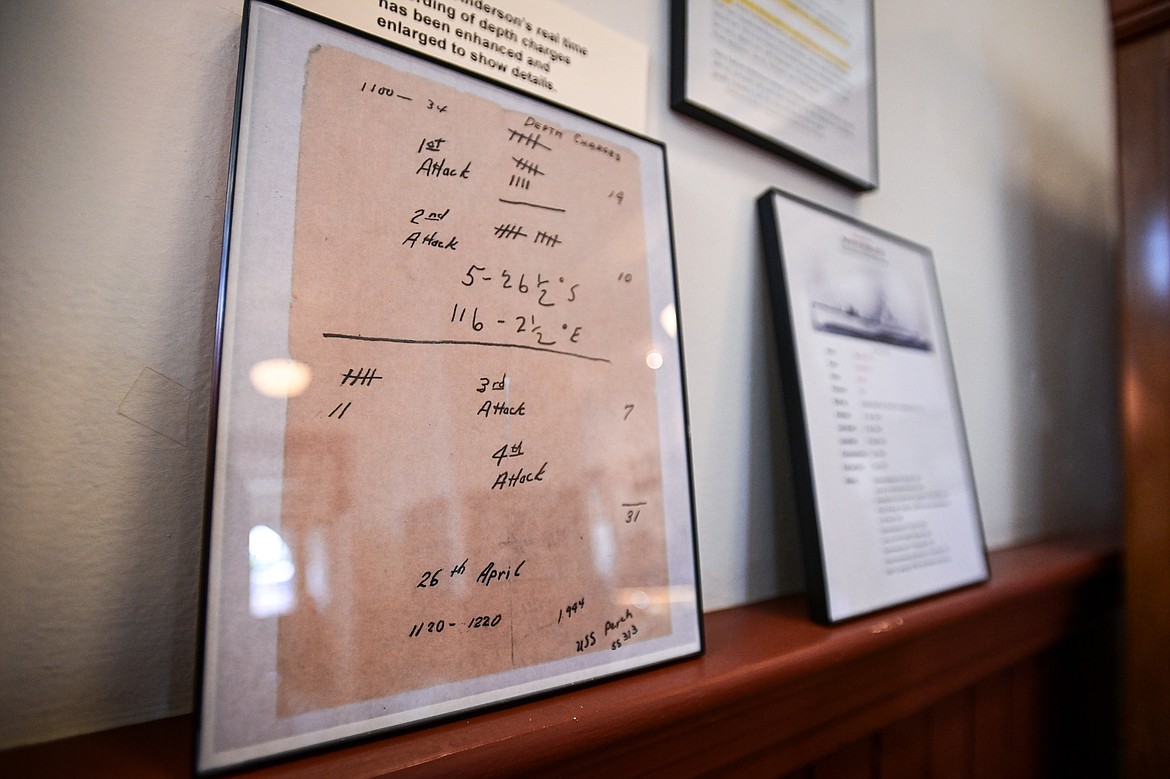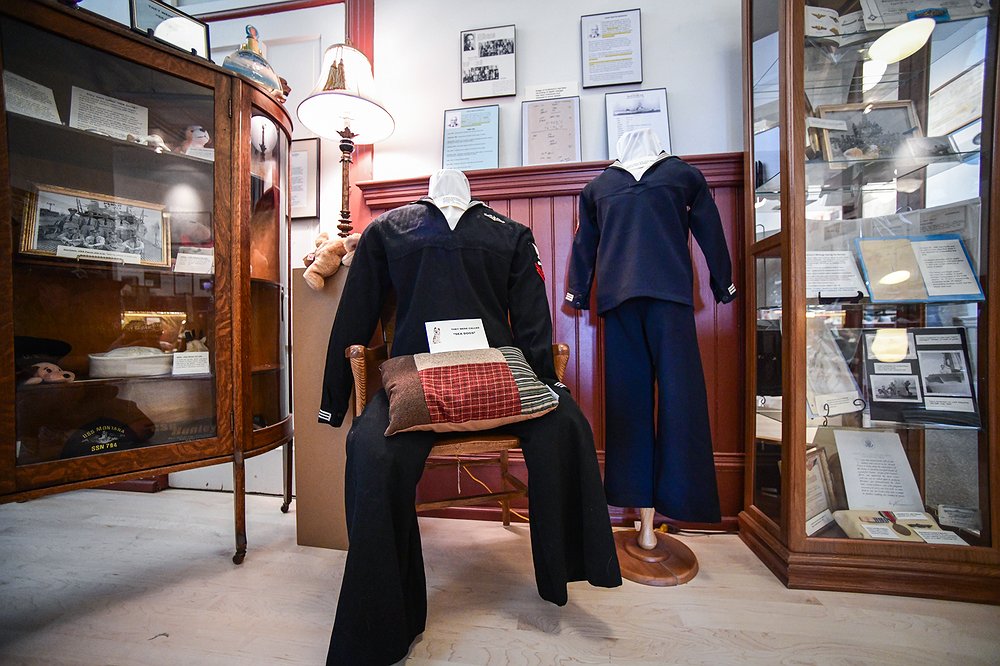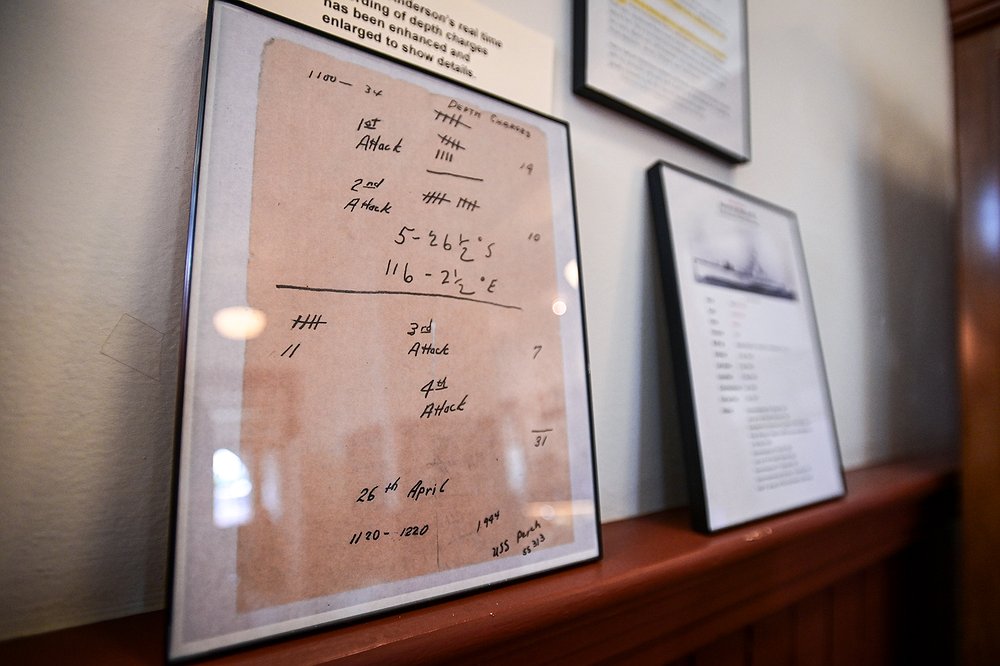Northwest Montana History Museum exhibit provides glimpse into Silent Service
It was only a year after Kalispell native Harry Anderson graduated college that he was assigned to the USS Perch II’s (SS-313) sixth patrol near the very end of World War II’s Pacific Theater. The submarine would endure two hours of depth charges from a Japanese ship up above during this excursion.
That bone-chilling experience was documented by Anderson in his journals and notes, which were discovered by his son Martin Anderson after he died. Martin, a retired history professor, knew that a good place for his father’s wartime items would be his hometown museum, housed in the building where he graduated high school.
So, he donated the items to the Northwest Montana History Museum in Kalispell.
“I think they (local museums) do a great job of telling stories of people who live in the community and experiences that they've had,” Martin Anderson said as he looked at the exhibit recently for the first time.
Museum volunteer Mary Miers was ecstatic to see the items donated. Her husband was a veteran, also serving on a submarine during the Vietnam War. It was one of her first projects as a volunteer at the museum and she jumped at the chance to create an exhibit around the writings.
"This is a guy on a submarine who was young. He was only 23 and experienced all these depth charges. And he came from Montana, it's so interesting, because Montana has no water around it. How did he become submariner?” Miers said.
ANDERSON GRADUATED from Flathead High School in 1940, where he was the editor of the school newspaper, The Arrow. Though his love of writing is evident in his many notes and journals, his son said, Anderson studied to be a chemical engineer at the Illinois Institute of Technology in Chicago. After his service, he had a long career with Chevron.
In 1943 he entered the V-5 program, which allowed students to complete an accelerated degree for officer training in the Navy. It was one year later that he entered the submarine service.
“The main thing my dad would do was pick up aviators — guys that had been shot down and they've landed in the ocean. It was important to go save them,” Martin Anderson said.
By far, Anderson’s most harrowing part of his time on the Perch were the depth charges, or explosive bombs, the submarine endured over a two-hour period.
"I mean, he never talked about it, but I can't imagine, the longest two hours of your life. Being underwater and knowing that they're trying to sink you,” Martin Anderson said.
Miers said her husband shared knowledge from his submarine service helped her decipher what Anderson went through during his time in World War II. In particular, with visualizing what it would have been like to be inside of the submarine while the explosions landed all around.
"The pipes were bursting, lights were flickering, and you had to stay quiet too. You couldn't yell or anything, because sonar would pick that up,” Miers said.
This got even more complicated with a furry friend on board. One hallmark of the Perch was their mascot, a lap dog named Duchess. She had to refrain from barking while the submarine survived the bombing.
“I would never visualize that submarine crew would have a mascot, like a little dog. I mean, it's underwater, running around, stuff like that. It's not something you'd think about. But I think they had pets to humanize themselves a little bit,” Martin Anderson said.
The display sits to the left of the front desk when visitors enter the museum. Because it is one of the first things people see when they come in, it has already caught the eye of several veterans who get to talking to their families about their own wartime experiences.
Museum volunteer Sharon Bristow, who helped put together the exhibit, said she overheard a visitor strike up a conversation with his family about his own submarine service after spotting the exhibit.
“I could hear him say that he was in a submarine, and I don't even know if this family knew about it ... But he was explaining all his service that he did to his whole family,” Bristow said.
Martin Anderson was excited to hear that his father’s display was already inspiring others to share their stories of serving in the military. Pulling from his career as a history professor, he said museums and their exhibits allow people to put the past in perspective.
“People lived in the past. They did things in the past. And it's these kinds of exhibits that make it easier for people to relate to it, versus what we have to do in history class,” Martin Anderson said.
For Miers, putting the exhibit together was one exciting find after another. From the photos of Duchess the Dog to the journals of surviving the underwater bombing, she hopes the items will help people understand the sacrifices those service members made.
“Here's a young fella right out of college who went through this harrowing experience. To me, I think people should know how, from a war standpoint, just how much people gave to the country,” she said.
The exhibit will be on display through Veterans Day. Several pages of journals, photographs and relics from the Perch can be viewed by visitors.
The Northwest Montana History Museum is at 124 Second Ave. E., Kalispell. For more information, go to www.nwmthistory.org/
Reporter Taylor Inman can be reached at 406-758-4433 or by emailing tinman@dailyinterlake.com.





